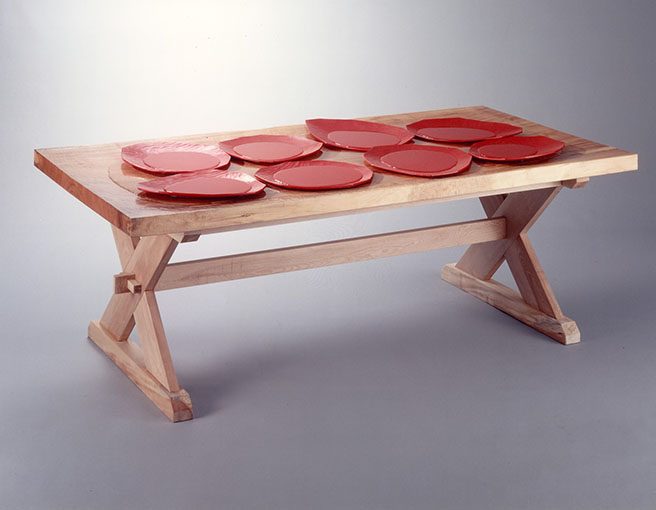
[Audio Guide]
Eight vermilion-lacquered plates filled with water are placed on a large table. The tabletop gradually descends toward the center, forming a shallow basin also filled with water on which the dishes sit lightly. Looking closely, one might notice slight ripples or the dishes swaying on the water. Titled Working Table – Dining Table for 7 Plus 1 People, this work is part of the Koshimizu Susumu’s Working Table series. The phrase “working table” sounds rough and rugged, and suitably, traces of the carving of the large, thick tabletop are evident. At the same time, the buoyancy and tension of the water on the tabletop, along with the imaginings stirred by the enigmatic title Dining Table for 7 Plus 1 People, are among the processes this table sets in motion. By adopting the form of a working table, Koshimizu may have sought to seamlessly connect artwork with the world around us.
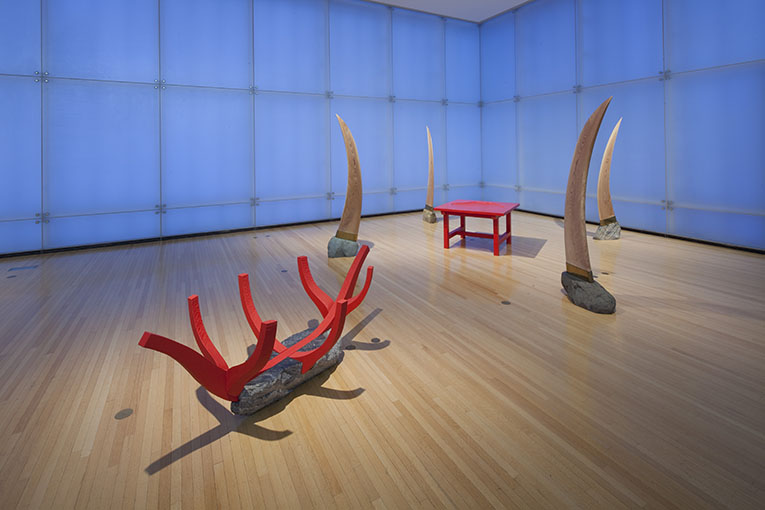
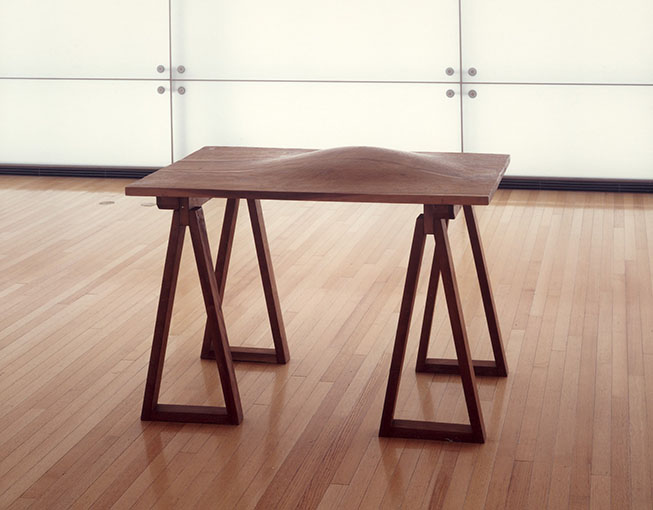

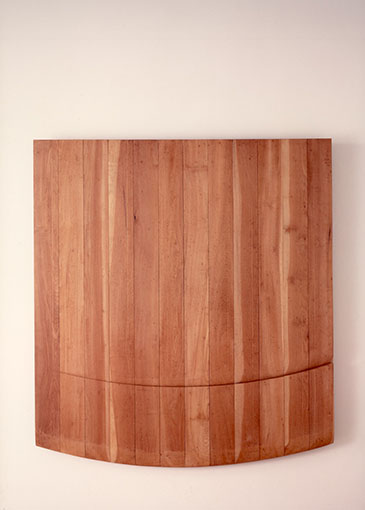
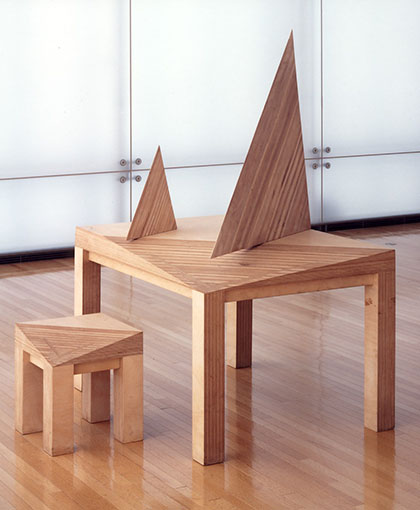
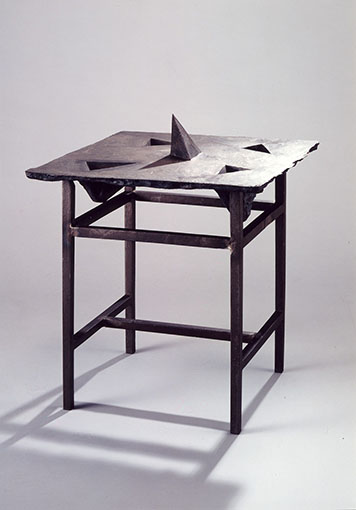
[Audio Guide]
The “tetrahedron” in the title refers to a pyramid with a triangular base. On a flat, table-like iron surface, a single tetrahedron protrudes, surrounded by four indentations with the same form inverted. Walking around the work, one notices that all five tetrahedrons have the exact same form but take on different appearances depending on the angle of viewing. A look at the lower part of the work reveals that the table legs are also iron, and are seamlessly integrated with the tabletop. This piece was the first in Koshimizu Susumu’s Working Table series. His approach of varying the shapes, volumes, and textures of objects on the tabletops may be rooted in his early involvement with the Mono-ha (“School of Things”) movement. However, while a working table is a familiar object in our daily lives, its transformation into an artwork in its own right is a distinctive feature of this artist’s practice.